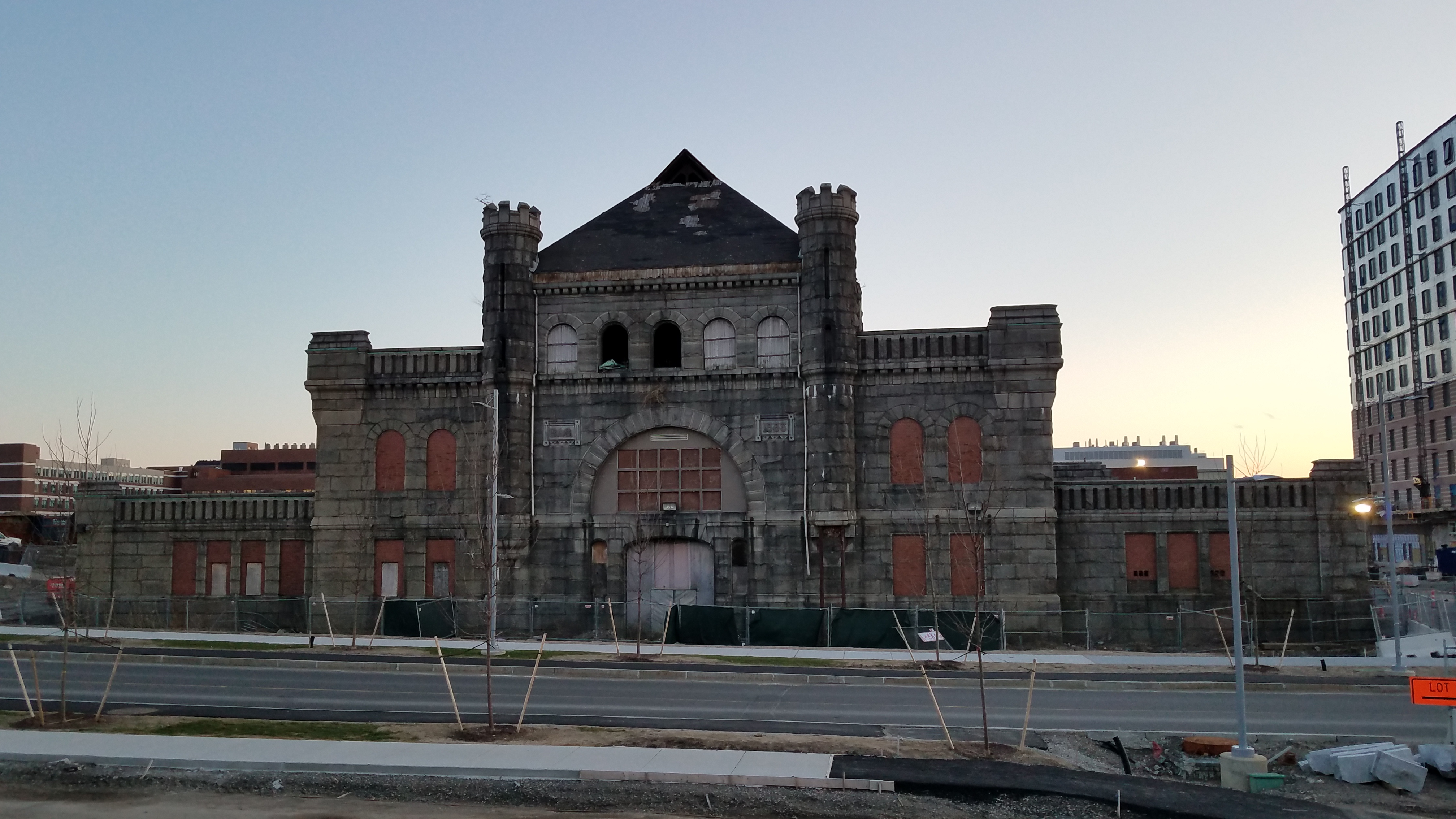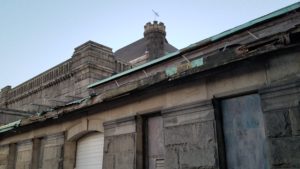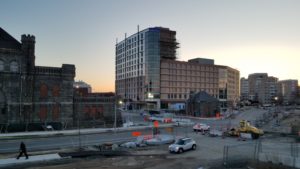
October 19, 2018 The Most Endangered Building in Boston
Guest writer, Earl Taylor of the Dorchester Historical Society worked with the community to nominate the Calf Pasture Pumping Station as a Boston Landmark. Read his history of the building and hopes for the future of the space.
On October 9, 2018 the Boston Landmarks Commission accepted the nomination of The Calf Pasture Pumping Station and its two associated outbuildings for further study in the process of becoming a Boston Landmark. On October 18, 2018, Preservation Massachusetts announced they are adding this historical resource to their Most Endangered List.
The Calf Pasture Pumping Station is located on Columbia Point in the Dorchester neighborhood of Boston. Columbia Point has traditionally been called the Calf Pasture because early settlers placed calves their after they were weaned from their mothers. The cows were sent to the Cow Pasture or Dorchester Neck, now South Boston.

The complex was acquired by UMass Boston for the land around it, where the university could pursue its development plans for new buildings. At that time UMass gave a promise to properly care for the buildings. Since then the Massachusetts Historical Commission has sent letters to UMASS pointing out the university’s obligations and requesting proper mothballing of the buildings. We hope the increased attention will prompt the University to let the public know its plans for the buildings and also prompt the University to protect them from weather infiltration to avoid demolition by neglect.
The Columbia Point Pumping Station represents one of Boston’s great technological innovations and was a turning point in the field of public health. Its system of interconnecting sewers, which was studied by many other cities in the US, played a vital role in improving the public health of late 19th-century Boston. The Boston Main Drainage system evolved into the Metropolitan Sewer District serving 23 municipalities by 1895, encompassing The Boston Main Draining System, North Metropolitan Sewer District, the Charles River Valley Sewer System and the South Metropolitan Sewer District. From the date of its construction in 1883-1884 and for more than a century, the Columbia Point Pumping Station has remained the most visible symbol of an underground system of international renown.
In 1875, the City of Boston created a commission of civil engineers to report on the state of the sewage system in the city. The Commission’s report showed the immediate need for a new sanitation system and proposed a plan for the construction of the Main Drainage System, with consolidated drains leading south of the city to the Calf Pasture at Dorchester. The new system was completed in 1884 and included the Calf Pasture Pumping Station Complex, and the Moon Island treatment facility.

Designed on the principle of gravity, the system allowed waste to travel from downtown Boston neighborhoods on higher ground, to Dorchester’s Calf Pasture on a lower elevation. By the time sewage reached the Pumping Station, it was 35 feet below ground. The Station had massive pumps designed by Erasmus D. Leavitt that lifted the sewage thirty-five feet to again enable its downward journey through an outfall tunnel leading away from the heavily populated city, past the oscillating tides, and towards Moon Island. At the time they were installed, the pumps were the largest in the world. Leavitt’s body of work includes pumps at the Chestnut Hill Reservoir.
Today the Calf Pasture Pumping Station and its two out-buildings are at risk and need immediate attention.



